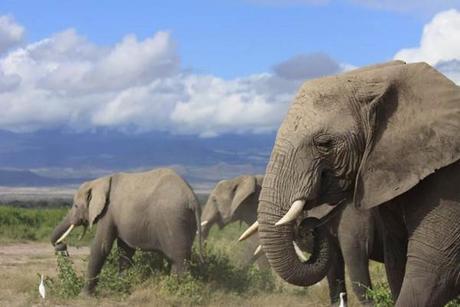
The population of Elephants in South Africa has grown from 8,000 to nearly 20,000 in a decade. The tendancy of Elephants to tromp down and uproot trees has led parks representatives to seek relief. After three years of vicious debates, the government of South Africa has decided to cull the “excess animals,” and the World Wildlife Fund supports them.
According to environment minister Martinus van Schalkwyk: ”Our department has recognized the need to maintain culling as a management option, but has taken steps to ensure that this will be the option of last resort that is acceptable only under strict conditions. The issue of population management has been devilishly complex and we would like to think that we have come up with a framework that is acceptable to the majority of South Africans.”
A century ago, South Africa only had around 100 elephants. Elephants being introduced to areas of South Africa as late as the 1990s has opened up an unnaturally fertile habitat, with constant access to artificial water sources and very few predators. In a country covered by forestland on only .5 percent of its land-base, due in large part to the climate, elephants can have a large impact. However, nearly all parties agree that a cull remains an extreme position.
There are no estimates today as to how many elephants that South Africa is willing to slaughter in order to preserve the biodiversity of the parks, but in 2005 the state attempted to kill 5,000 elephants before protests stopped the plan in its tracks. Elephant culls began under the apartheid regime in 1960, and continued as official policy until the 1990s.
In a cull, helicopters are used to herd a family of elephants into groups, and hunters open fire, saving only the 4-10 year olds. These younger elephants are then relocated to distribute the population evenly throughout the park system, because tourists want to see elephants regardless of where they are.
“All available options must be available to control the elephant population here and conserve the biodiversity of the national parks,” said Rob Little from the World Wildlife Foundation (WWF). “The new framework imposes a hierarchy of choices, and culling is right at the bottom. We are not going to see a mass destruction of elephants here.”
Other methods of dispersing or slowing the population growth of elephants include contraception and relocation, both of which cause significant distress for the animals. The humane society has supported the contraception rather than culling.
The WWF’s stance in favor of the state’s decision to cull elephants has brought widespread condemnation. Many regard the stance as unscientific, callus, and embarrassing, and some are threatening a tourism boycott if South Africa goes ahead with the cull. As Michele Pickover of Animal Rights Africa explains, ”This is a sad day for the country. Elephants are being treated as commodities by the government and game managers.”
Recent studies have shown that “wildlife management” has deeper impacts on species population than previously believed. In a study published in Frontiers in Zoology, a team of scientists show that elephants raised after a cull in which their families have all been killed will not respond to social threats in normal ways, and may pass on the unusual behaviors to their next of kin. The team’s findings show “unequivocally that conservation that is only based on [population] numbers, and which does not take into account the individual ends in disaster.”
According to the head of the Conservation Ecology Research Unit at the University of Pretoria Rudi Van Aarde there are key proposals that the government is not acknowledging. Van Aarde supports ecological linkages, allowing elephants to move from park to park, and thus opening up more land for habitat.
Sam Ferreira, the large mammal ecologist at Kruger park (about the size of Denmark), agrees that by managing the habitat for elephants, including access to water, zoologists claim that progress can be made without a cull.

